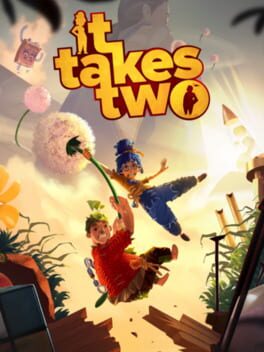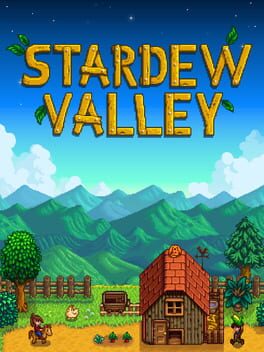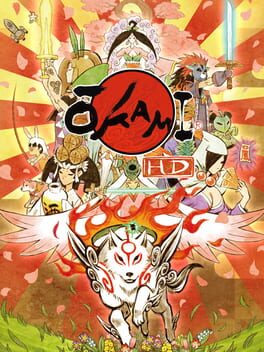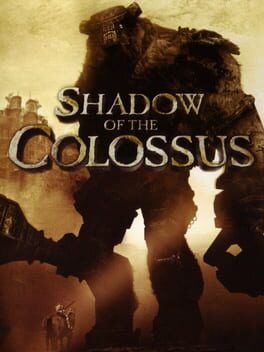imEx
9 reviews liked by imEx
Sea of Stars
2023
From the same studio that made The Messenger, Sea of Stars was one of my most anticipated games of the year, and while there is a lot to like, I think it ended up being a bit of a disappointment. Beginning with the positives, the game is absolutely gorgeous. This game might have the best pixel art I have ever seen. The environments are lush and vibrant, the animations are fluid and detailed, and it is by far the game's strongest area. The soundtrack quality matches its visuals, even featuring the composer from Chrono Trigger as a guest. The game takes inspiration from Chrono Trigger in other ways too -- such as the combat -- which despite my complaints later, I think is pretty well designed. It's a bit of a mix between Paper Mario and the Chrono games, with three party members, dual techs, and extra damage on timed moves. It's a solid system, and for the first few hours I was thoroughly enjoying myself. This brings me to my issues with the game, namely that it plateaus very early. With the exception of the prologue (where they give you backstory for an hour before letting you actually play the game), the game is well paced at the start, giving you new abilities and mechanics and giving the plot a strong sense of direction. After a while though, things begin to drag. Each character only has three special moves total, and once you learn those early on, the combat never evolves. Every battle ends up being very monotonous. Some of the more powerful techniques -- such as ultimate moves or dual techs -- take too long to charge up to be used in anything other than boss fights. Many of the moves are also tedious to use, such as the lunar boomerang move. It's a cool move, but takes concentration and a bit of time to use without a clear advantage. My biggest issue however has to be the plot. From moment to moment it's fine, but I never felt super engaged with the events, and often felt a bit aimless. For many plot-heavy games, I often stop and ask "Why are the characters here?". In some games (such as Chrono Trigger) the events that lead the heroes to each point are easy to follow and track, and the plot logically follows along. This game... not so much. It starts out well, but by the midpoint begins follow its own logic without many stakes. This culminates in what I must vaguely describe as a very lackluster ending. It's clear they really want me to go and work towards a better "true ending", but frankly I don't feel the engagement enough to continue. It's a shame, this game has a lot going for it. If you had asked me after 5 hours or so my feelings, I would've said it was a solid 4.5/5 game. I was waiting for a "wow" moment to really push it to the next level, but that moment never came. Instead, the game coasts along a bit, and while I do think it's one of the better indie RPGs in recent years, I find myself a bit let down.
My secret favorite "genre" are games that span across multiple time periods, allowing you to see how the world evolves over time. 13 Sentinels is a game that does this... sort of. It is 90%-ish a visual novel and 10% RTS style combat. You play as a fuckton of Japanese teenagers mainly living in the mid-1980s as they uncover a bunch of conspiracies about their lives. It's odd, I would actually say that this game doesn't really have any new sci-fi concepts, but instead includes ideas from every sci-fi movie you can think of. Terminator. The Matrix. E.T. Westworld. Invasion of the Body Snatchers. Groundhog Day. Alien. War of the Worlds (this one they actually call out by name, thanks public domain!). Each character has their own different bizarre events going on which, together, allows the player to understand the overall plot. Each character's story is broken up into chapters, which does lead to some odd transitions between chapters. For example, there are times where a character has uncovered a huge truth about the world they live in, shattering their perception of life. Then when we pick them up in the next chapter... they're just back at school. There are a number of cases where this happens, and it almost lead me to think there was another big mystery going on, but no, it's just weird storytelling. The game does also rely heavily on non-sequential events to hide important facts from the player, but it actually works well with the systems they provide to you.
I was a big fan of the classic Kirby games, but honestly none of the titles released in the last 15 years or so have really caught my eye. Kirby was always easy, but the original titles were still fleshed out and expansive, which turned into simple linear platformers in recent years. To my surprise, they have finally released a proper 3D Kirby game and I was thoroughly impressed with what they have done. The worlds, while perhaps a little cliche, were full of interesting secrets and fun level design. I really liked the way they handle abilities; in some Kirby games you end up with 30 abilities, most of which you never see or use. Here, there's only about 10 abilities, but you can upgrade them to different variations of each other. It's well done and incentivizes you towards exploring and collecting items. My only disappointment was the post-game world, which is really just a bunch of reused levels. However, since it's technically optional content, I don't really hold it against it.
It Takes Two
2021
I only knew this game as it seemed to be mentioned a lot during "GotY" season last year, but I honestly wasn't really expecting much. I thought it would be a pretty simple coop platformer game that wasn't anything to write home about. I was very mistaken. The real strength of the game is how well it is able to keep things fresh with different mechanics and settings. It's always a platformer in a Honey I Shrunk the Kids-type world, but they twist on that concept and give the players additional mechanics that spice things up. At one point it takes on RPG elements, it's briefly a fighting game, I was constantly surprised with how engaged I was. The story itself was fine, although it does have some notable highlights. I can definitely understand why it got such praise.
Stardew Valley
2016
My most played game on steam for a good reason. This is just one of those games I come back to every so often and then it's the only thing I wanna play for a few weeks and then shelve it again for another few months starting the cycle anew. Banger all around I always marry Shane for blue chickens and cuz boy I'm depressed too
Ōkami HD
2012
Okami HD is worth playing as a piece of gaming history or if you’re especially fond of the gameplay loop popularized by the Legend of Zelda series. Okami’s art style and its celestial brush mechanic are both impressive, and I’m surprised there haven’t been more iterations on them since Okami’s release. The game also stands out as one of the earliest Zelda-like games (that I can remember) that still manages to have its own identity — both mechanically and in its personality. As for Okami HD’s short comings, they aren’t as easily overlooked as they may have been in the past. The game’s crass and bawdy humor feels like an attempt to make a kid-friendly version of comedy popular at the time with South Park and Family Guy. Far more egregious than its lame jokes, though, are the game’s minor, but very repetitive, technical and mechanical issues that should have been excised in the remastering process.
Okami’s most notable and positive feature is its art style. It’s beautiful cel-shaded design, inspired by traditional Japanese painting styles, isn’t just a joy to look at and see in motion — it compliments Okami’s themes of regrowth and the importance of storytelling. Every time you restore an area that’s been taken over by Evil vibes, a beautiful cinematic plays as the zone erupts in bright and vibrant colors. Those restorations are paired with gaining “praise,” which is the game’s form of experience, from the people whom your heroic deeds have saved or improved the lives of.
The art direction also adds to Okami’s standout mechanic of the “celestial brush.” Rather than linking multiple game mechanics to an assortment of equipment and weapons, like the Zelda games it takes inspiration from, Okami has you paint different symbols on the screen with a calligraphy brush to enact different skills. It’s an interesting way to change up the formula of a Zelda game, and it’s (usually) a fun way to interact with Okami’s world. One of the most frequent uses of the brush is drawing circles around plants to induce a sudden bloom of leaves and petals, and it never stopped being a joyful and satisfying visual experience.
Another way Okami differentiates itself from Zelda games is in its characters’ personalities — chiefly through humor. Both Amaterasu, the white wolf you play as, and her partner, a “poncle” (sort of like a fairy in western traditions) named Issun, are frequently the butt of the game’s jokes. And while Amaterasu doesn’t speak, Issun talks enough for them both, as he constantly fires off quips and expository ramblings. Unfortunately, most of Okami’s “jokes” retread the same sophomoric material with Issun obsessing over boobs, making snide and sarcastic remarks at the people you’re helping, or erupting into over-the-top tirades in response to minor misunderstandings. And, look, I’ve played enough Japanese games and watched enough anime for this stuff to elicit nothing more than an eyeroll from me — but it’s so constant in Okami that my eyes were turning into spirals.
Whereas Okami’s humor only annoyed me, its technical and mechanical issues are where I began to actively dislike my experience of the game. None are particularly terrible, but there are so many minor issues that feel like obvious fixes for a remaster like Okami HD. The most frustrating of these are the constant breaks in flow caused by load times, repetitive short cinematics tied to collectibles and the game’s day/night cycle, repetitive notifications for item pickups, and how certain menus and dialogs are structured. You’re able to skip the repeated cinematics, but you must wait for them to start before you can prompt a skip. Okami also has one of the most frustrating cameras I’ve experienced in a while. The camera is fine 90% of the time, but nearly every platforming challenge lacks a view that conveys depth and distance clearly. Though relatively minor, these issues add up over Okami HD’s runtime: just completing the campaign takes about 40 hours; if you, like me, feel compelled to try and complete every collectible list and side quest, you’re looking at 60 hrs or more.
I think every game-ophile owes it to themself to play Okami HD — for about 5 to 10 hours — and experience its art direction, the celestial brush mechanic, and to enjoy a piece of gaming history. It’s an interesting variation on one of gaming’s cornerstones, the Legend of Zelda series, but stands on its own merits. But despite those merits, it doesn’t earn the time needed to play through it completely.
What I like about Okami HD
• The art direction — this game is gorgeous, and it’s a damn shame there aren’t more titles that do similar things with cel-shaded graphics.
• Overcoming blighted regions by regrowing and renewing the lands, plants, and animals looks amazing and feels very cathartic in our current age of climate crisis and mass extinction.
• Okami’s narrative is a threading together of different Japanese myths and legends. I don’t think it works as a complete story, but the retellings are fun to experience as standalone missions tweaked to incorporate gameplay mechanics.
Why you might want to skip Okami HD
• The constant stop and start to the flow of play, caused by a variety of Okami’s mechanics, interfaces, and load times, can be a “death by a thousand cuts” experience for your patience. Especially if you’re a completionist.
• Okami’s crude humor is so constant, and specifically misogynistic, that it gets grating very quickly.
Okami’s most notable and positive feature is its art style. It’s beautiful cel-shaded design, inspired by traditional Japanese painting styles, isn’t just a joy to look at and see in motion — it compliments Okami’s themes of regrowth and the importance of storytelling. Every time you restore an area that’s been taken over by Evil vibes, a beautiful cinematic plays as the zone erupts in bright and vibrant colors. Those restorations are paired with gaining “praise,” which is the game’s form of experience, from the people whom your heroic deeds have saved or improved the lives of.
The art direction also adds to Okami’s standout mechanic of the “celestial brush.” Rather than linking multiple game mechanics to an assortment of equipment and weapons, like the Zelda games it takes inspiration from, Okami has you paint different symbols on the screen with a calligraphy brush to enact different skills. It’s an interesting way to change up the formula of a Zelda game, and it’s (usually) a fun way to interact with Okami’s world. One of the most frequent uses of the brush is drawing circles around plants to induce a sudden bloom of leaves and petals, and it never stopped being a joyful and satisfying visual experience.
Another way Okami differentiates itself from Zelda games is in its characters’ personalities — chiefly through humor. Both Amaterasu, the white wolf you play as, and her partner, a “poncle” (sort of like a fairy in western traditions) named Issun, are frequently the butt of the game’s jokes. And while Amaterasu doesn’t speak, Issun talks enough for them both, as he constantly fires off quips and expository ramblings. Unfortunately, most of Okami’s “jokes” retread the same sophomoric material with Issun obsessing over boobs, making snide and sarcastic remarks at the people you’re helping, or erupting into over-the-top tirades in response to minor misunderstandings. And, look, I’ve played enough Japanese games and watched enough anime for this stuff to elicit nothing more than an eyeroll from me — but it’s so constant in Okami that my eyes were turning into spirals.
Whereas Okami’s humor only annoyed me, its technical and mechanical issues are where I began to actively dislike my experience of the game. None are particularly terrible, but there are so many minor issues that feel like obvious fixes for a remaster like Okami HD. The most frustrating of these are the constant breaks in flow caused by load times, repetitive short cinematics tied to collectibles and the game’s day/night cycle, repetitive notifications for item pickups, and how certain menus and dialogs are structured. You’re able to skip the repeated cinematics, but you must wait for them to start before you can prompt a skip. Okami also has one of the most frustrating cameras I’ve experienced in a while. The camera is fine 90% of the time, but nearly every platforming challenge lacks a view that conveys depth and distance clearly. Though relatively minor, these issues add up over Okami HD’s runtime: just completing the campaign takes about 40 hours; if you, like me, feel compelled to try and complete every collectible list and side quest, you’re looking at 60 hrs or more.
I think every game-ophile owes it to themself to play Okami HD — for about 5 to 10 hours — and experience its art direction, the celestial brush mechanic, and to enjoy a piece of gaming history. It’s an interesting variation on one of gaming’s cornerstones, the Legend of Zelda series, but stands on its own merits. But despite those merits, it doesn’t earn the time needed to play through it completely.
What I like about Okami HD
• The art direction — this game is gorgeous, and it’s a damn shame there aren’t more titles that do similar things with cel-shaded graphics.
• Overcoming blighted regions by regrowing and renewing the lands, plants, and animals looks amazing and feels very cathartic in our current age of climate crisis and mass extinction.
• Okami’s narrative is a threading together of different Japanese myths and legends. I don’t think it works as a complete story, but the retellings are fun to experience as standalone missions tweaked to incorporate gameplay mechanics.
Why you might want to skip Okami HD
• The constant stop and start to the flow of play, caused by a variety of Okami’s mechanics, interfaces, and load times, can be a “death by a thousand cuts” experience for your patience. Especially if you’re a completionist.
• Okami’s crude humor is so constant, and specifically misogynistic, that it gets grating very quickly.
I am so glad I played the PS2 version in all of its gorgeous aesthetic.
Fumito Ueda games are always an aesthetical achievement. The ability to carve emotional landscapes which feel so ethereal is stunning. The overwhelming bloom lighting and vast rolling hills and plains are incredibly immersive, the muted and washed tones of green, brown and gray envelopes the feeling of the game, as this desolate and cold world despite its blinding sheen when you trot along the flowing environment on your horse towards your next Colossi. The world of SOTC is purposely empty, meticulously designed, which further helps to push the feelings of cold illumination, intriguing mystique , two juxtaposing ideas, liminality where there exists nothing but the Colossi. You play as “Wander”, making your way to each Colossus and slowly putting an end to what little life remains including lizards which you also kill because it makes you stronger. As the player we directly contribute to Wanders’ violence even though ultimately Wander makes the decision to kill every Colossi in order to bring back Mono. At the end of the game Wander is forced to face his consequences and it ends up affecting us as the player as well, where we decay into the physical embodiment of Dormin himself, this is the result of Wanders actions on a personal level, was it really worth killing the Colossi? Their shrieking roars which we start to find empathy for. The game deliberately throws nuance to this question adding a moral facet. While the mixed emotions of the colossi and their enigmatic and curious state show that perhaps ending such a monolithic life form is not the right choice, the end of the game shows Mono alongside deers, doves, flora and fauna indicating rebirth and tenderness. Perhaps banishing Dormin tore away his aura over the forbidden lands which brought back warmth and serenity to what was an almost lifeless domain. SOTC is not only about the consequences of your violent actions and the idea of futility but also accepting what can’t be changed.
Fumito Ueda games are always an aesthetical achievement. The ability to carve emotional landscapes which feel so ethereal is stunning. The overwhelming bloom lighting and vast rolling hills and plains are incredibly immersive, the muted and washed tones of green, brown and gray envelopes the feeling of the game, as this desolate and cold world despite its blinding sheen when you trot along the flowing environment on your horse towards your next Colossi. The world of SOTC is purposely empty, meticulously designed, which further helps to push the feelings of cold illumination, intriguing mystique , two juxtaposing ideas, liminality where there exists nothing but the Colossi. You play as “Wander”, making your way to each Colossus and slowly putting an end to what little life remains including lizards which you also kill because it makes you stronger. As the player we directly contribute to Wanders’ violence even though ultimately Wander makes the decision to kill every Colossi in order to bring back Mono. At the end of the game Wander is forced to face his consequences and it ends up affecting us as the player as well, where we decay into the physical embodiment of Dormin himself, this is the result of Wanders actions on a personal level, was it really worth killing the Colossi? Their shrieking roars which we start to find empathy for. The game deliberately throws nuance to this question adding a moral facet. While the mixed emotions of the colossi and their enigmatic and curious state show that perhaps ending such a monolithic life form is not the right choice, the end of the game shows Mono alongside deers, doves, flora and fauna indicating rebirth and tenderness. Perhaps banishing Dormin tore away his aura over the forbidden lands which brought back warmth and serenity to what was an almost lifeless domain. SOTC is not only about the consequences of your violent actions and the idea of futility but also accepting what can’t be changed.








